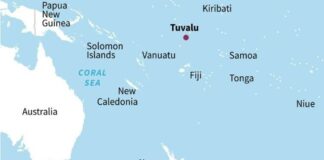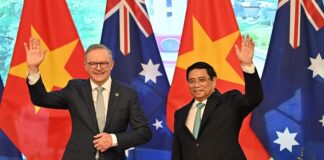A good deal of the official optimism about the Australian economy’s prospects is based upon the belief that Australia’s number one trading partner, China, can lead us out of recession.
Tim Harcourt, chief economist at The Australian, writes, “because of our panda hugging exporters, Australians can be thankful that we are faring better than most of our counterparts in the global financial crisis.”
What happens in the Chinese economy matters to Australia. Trade between China and Australia last year was $60 billion.
Some recent data appears to point to a revival. In the first seven months of 2009 Australia’s exports to China rose 43 per cent to $25 billion. China’s share of global exports is 17 per cent compared with 15 per cent last year.
In June electricity consumption increased 5.2 per cent.
These numbers are almost exclusively the result of the US$585 billion stimulus package.
Bank of Scotland analysts say that around 20 per cent of new loans have gone into the equity markets and another 30 per cent into property and other financial assets. This is the kind of funny money that was behind the financial meltdown in the US.
The rest has gone towards tiegongji—the iron rooster—the combination of rail, roads and airports.
It seems then that as long as the enormous infrastructure projects steam ahead, China will be buying even more Australian ore. Iron ore remains the most important Australian export to China, at 58 per cent of total exports last year.
But will these infrastructure projects generate more growth or will growth stall once the mountains of government stimulus cash disappears?
The big problem for Chinese capitalism is that a lot of the infrastructure projects will be distorted by corruption and the uneven level of development.
For example some officials are worried that there is an obsession with building airports. The town Jiaxing is a one hour drive on new expressways from three of the country’s biggest international airports—two in Shanghai and one in Hangzhou. And yet the Jiaxing government wants to build its own.
The government’s stimulus money is incapable of kick-starting widespread consumer spending. Many Chinese families are more likely to save than spend, worrying about having money to cover episodes of poor health.
This recession has hit real production in China particularly hard. Forty percent of China’s growth comes from exports. According to the Financial Times in May of this year exports plunged 26.4 per cent against a year earlier. Unemployment hit 9.4 per cent at the end of last year and is still climbing.
Obstacles to renewed growth
There are three key structural obstacles that the stimulus package cannot overcome.
First, away from the booming Guangdong province Chinese industry is plagued by chronic inefficiency.
In 1980 China had to increase its capital stock rate by 9 per cent to grow at 9.8 per cent but by the late 1990s it had to increase it by 12 per cent to grow at around 8 per cent.
The difficulty in maintaining growth is the result of deep-seated problems within Chinese capitalism.
Employers are having to spend more on machinery, equipment, buildings—capital—rather than employing more workers. As Karl Marx demonstrated, when investment in labour declines against investment in capital there is a tendency for the rate of profit to fall.
Secondly, the Chinese banking sector is incredibly fragile. The state owned enterprises, the largest recipients of bank loans, owe the banks more than US$2 trillion. There is real doubt about their capacity to pay this back. Already non-performing loans amount to US$900 billion.
Finally, popular opposition to the government is growing. There are more than 70,000 public demonstrations and one million workers taking strike action each year.
The global manufacturing hub around Shenzhen, across the border from Hong Kong, has experienced a dramatic upsurge in class struggle.
The stimulus package might have produced some encouraging numbers for China’s business elite and the Australian Reserve Bank but the real test is whether this can sustain growth in the months ahead.
By Tim Erikson





